京人形 京人形商工業協同組合
KYO-NINGYODOLLS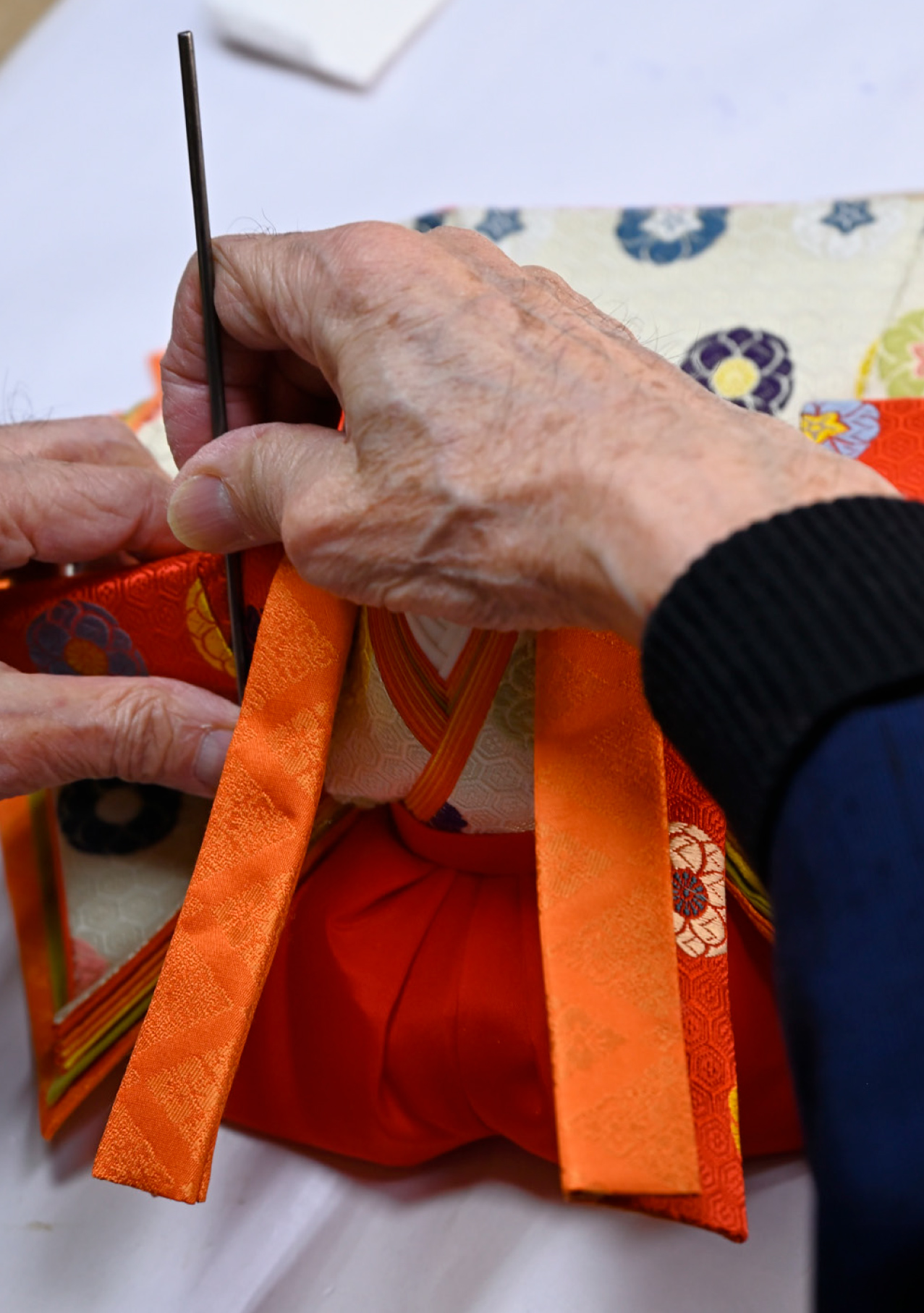 1
1
- それぞれの職人が手がけた部位を取りまとめ、着物の色合わせなどを考案して最終の仕上げをする着付師。
京人形の特徴は、部位や部品ごとに専門の職人が作る分業制度が確立されていることです。その賜物が、京人形を代表する桃の節句の雛人形と、端午の節句の鎧・兜といえます。雛人形は、頭師、髪付師、手足師、小道具師などが手がけた部位が着付師のもとに集められ、西陣織の布地で仕立てた衣装を着付けて仕上げられます。鎧・兜は、彫刻師、塗師、箔押師、房師などによる数百におよぶ細かな部品を京甲冑師が組み上げます。どちらも子供の健やかな成長を願って飾られるものですが、近年では、季節を感じさせる飾りやパーソナルなアートとして大人が自分のために買い求めるという新しいスタイルが生まれています。京人形の起源は、平安時代(8〜12世紀)、貴族の子どもの間で流行したままごと人形「ひいな人形」といわれています。江戸時代後期(18〜19世紀)には、宮廷から諸大名への贈答用として子供の愛らしい姿を写した「御所人形」が重用されました。こうした伝統が、今に息づいています。
Kyo-dolls (ningyō, lit. "human form") are made under a highly specialized division of labor where each craftsman is responsible for a specific aspect of the doll. Types of doll vary, for example hina dolls are made for the Doll Festival (Hina-matsuri), while dolls dressed in armor and helmets are offered to children during the Tango Festival. Each hina doll craftsman works on his respective specialty (head, hair, limbs, accessories, etc.), then the doll is finished by the dressing master, who assembles it and adds a Nishijin fabric costume. Doll armor and helmets are also specialized: hundreds of intricate parts made by a sculptor, painter, foil stamper and tassel maker, then assembled by the armory master. These dolls are traditionally given to children, but in recent years, new styles have emerged for adults to purchase and admire as seasonal decorations or artworks. The origin of the Kyo-doll dates back to aristocratic children during the Heian period (8th to 12th centuries). In the latter half of the Edo period (18th to 19th centuries), the "Gosho doll", which depicts a cute, plump baby figure, was used as a gift from the court to various feudal lords. These traditions of doll making continue up to the present day.
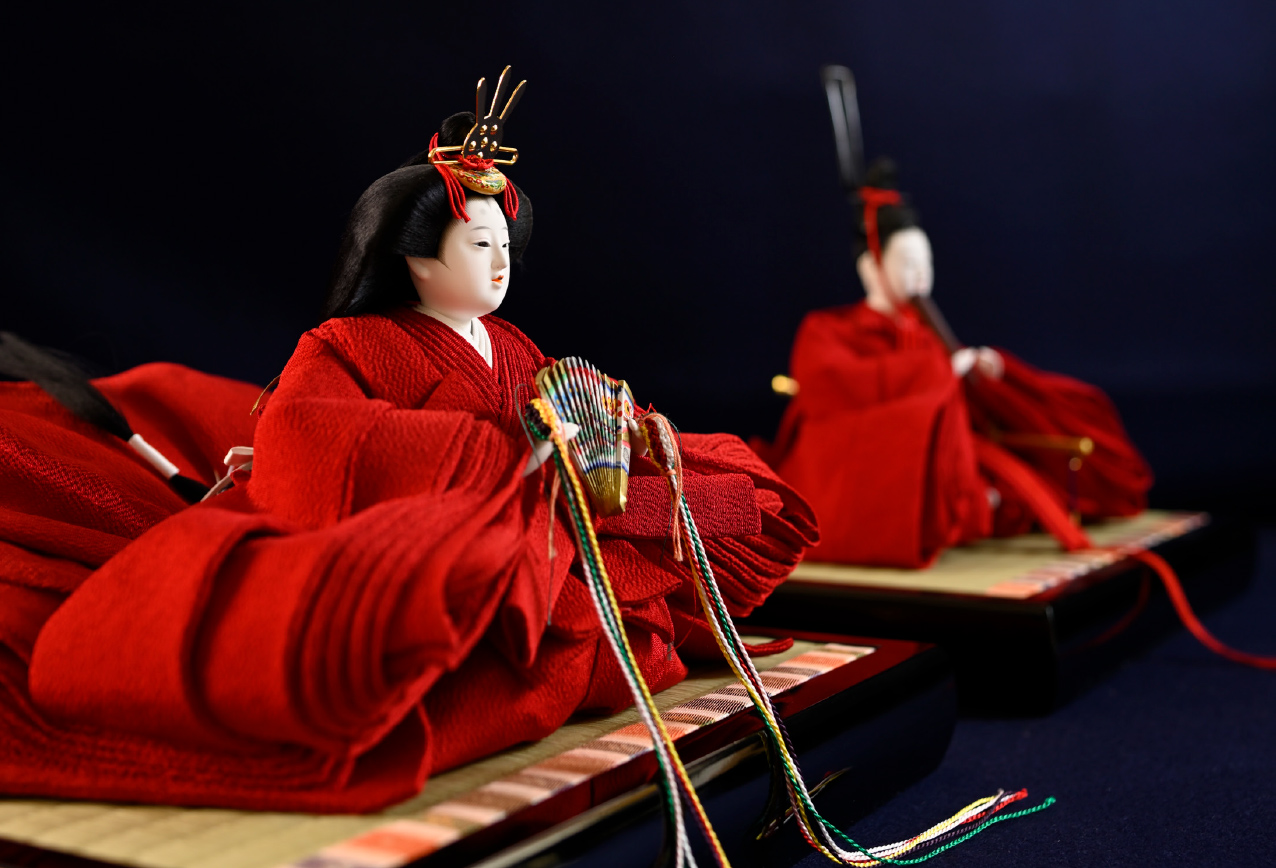 2
2
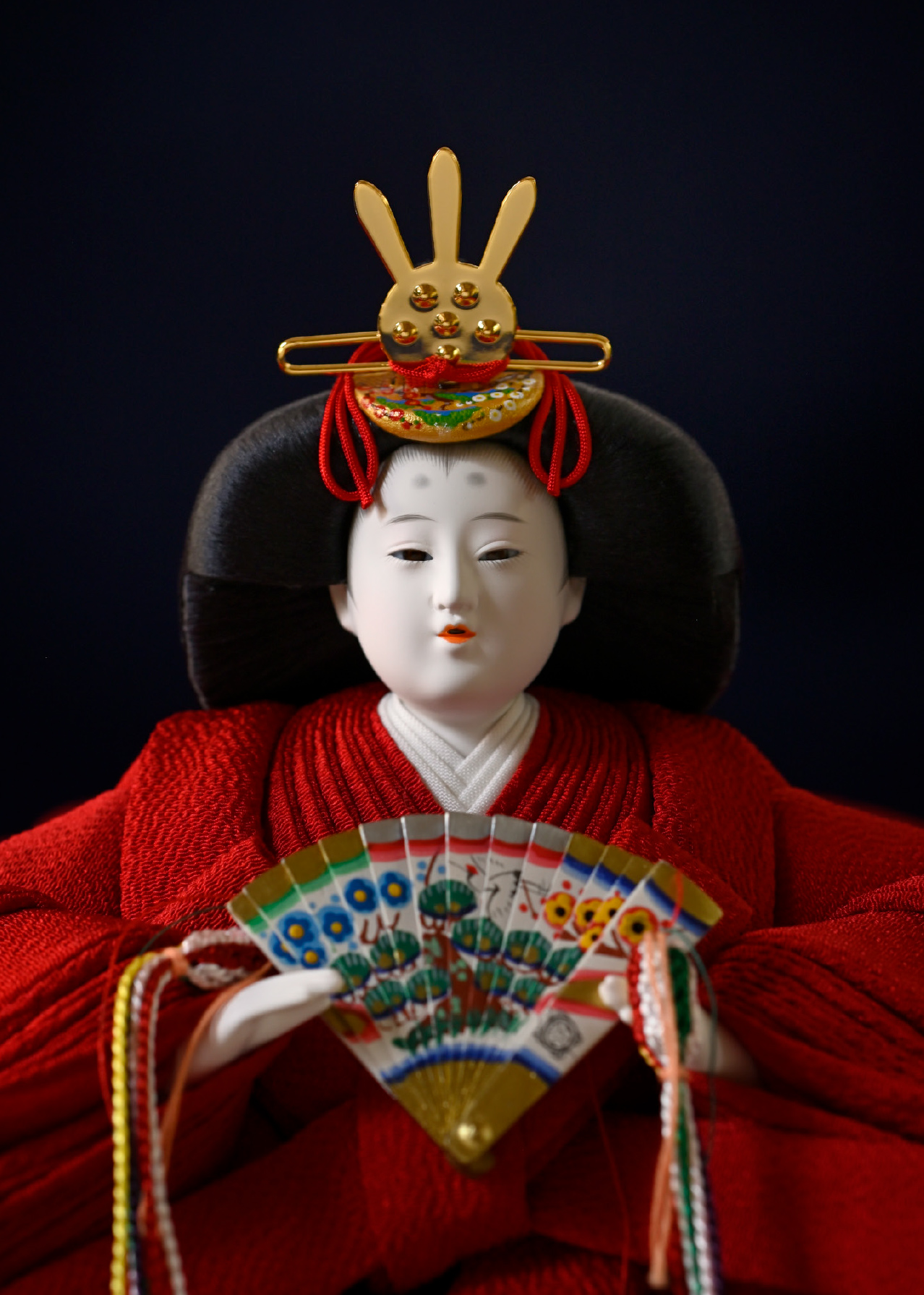 3
3
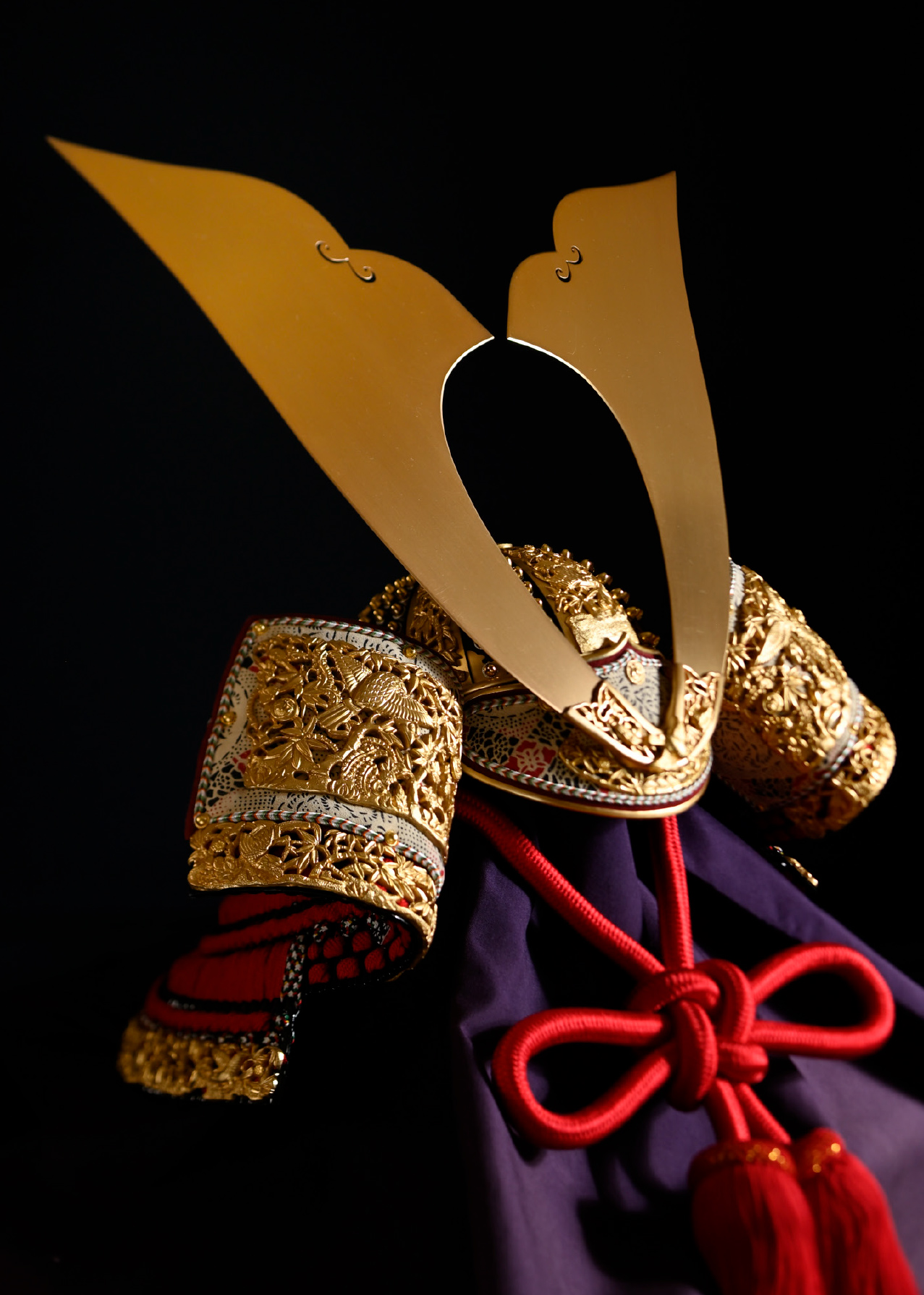 4
4
2,3. : 大人のための、単色の着物を着せたモダン雛。ホテルや店舗の季節を彩るアートとしても用いられている。
- : 五月人形の兜。
(1,2,3,4 すべて京都桂甫作安藤人形店)
1: A kimono master finishes the work by putting together the parts handled by each craftsman and devising the matching color of the kimono. 2,3: Modern hina wearing a single-colored kimono. It is also used as seasonal art decoration in hotels and stores. 4: Satsuki doll helmet. (1,2,3,4 Ando Ningyō-ten)
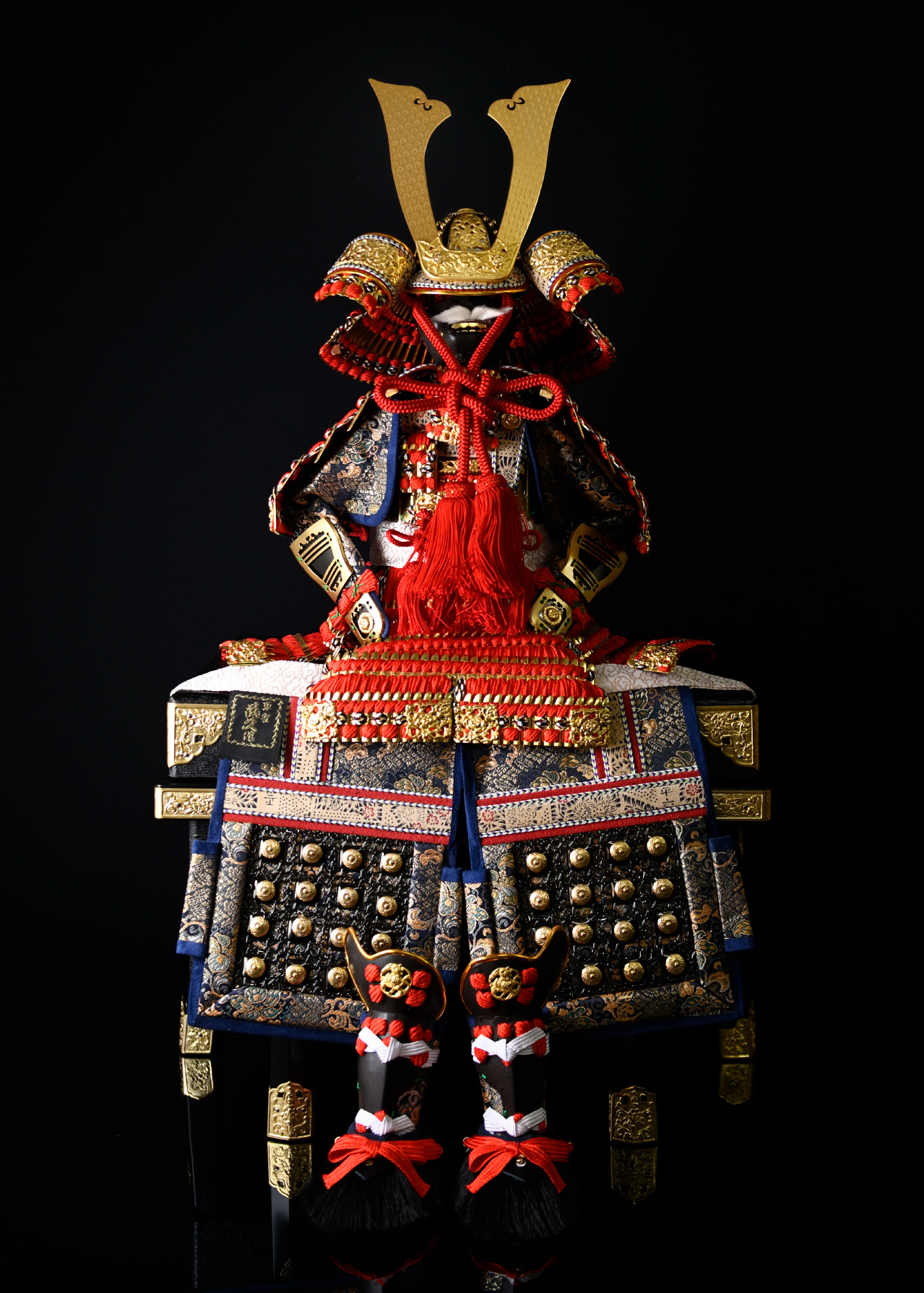 5
5
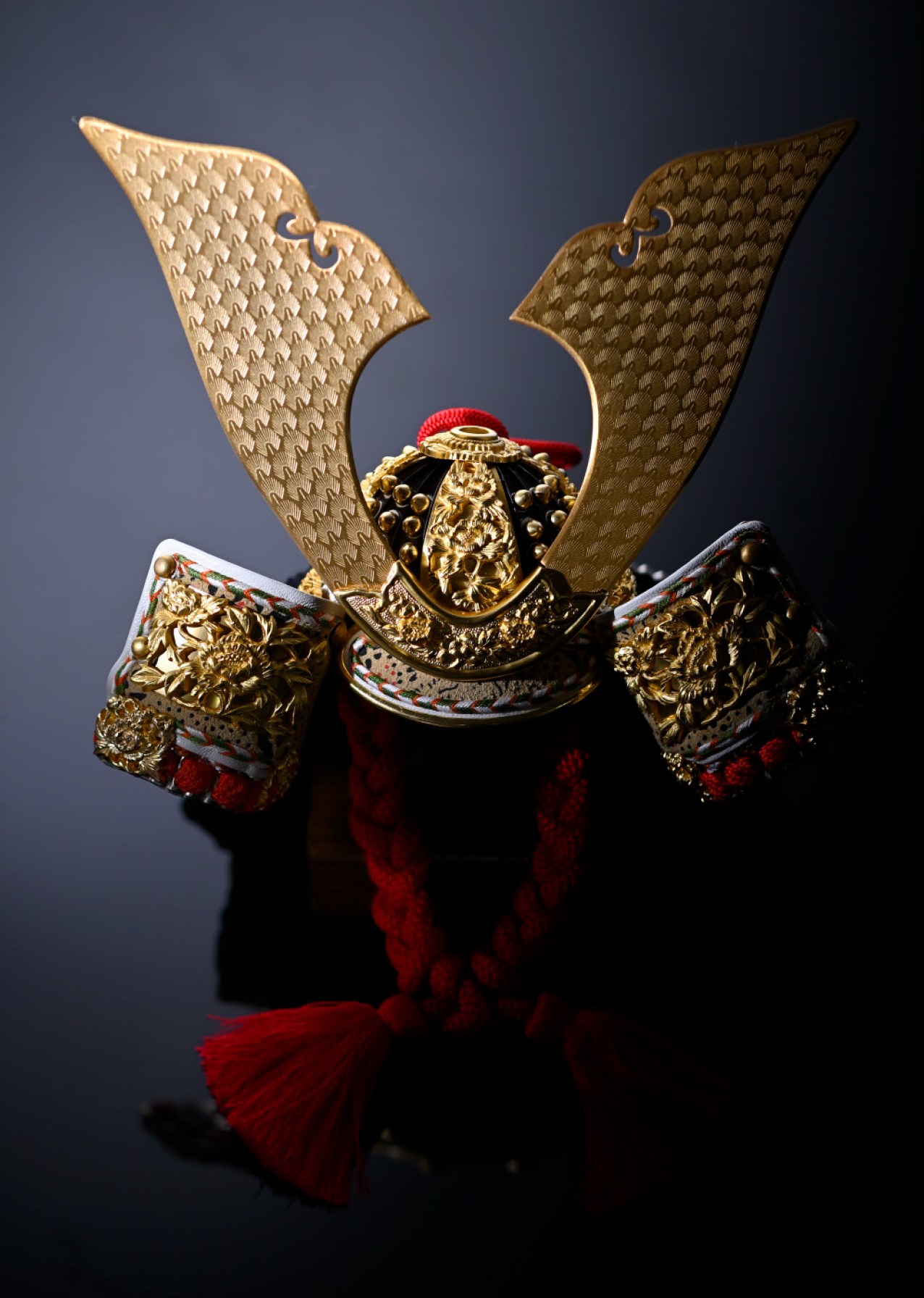 6
6
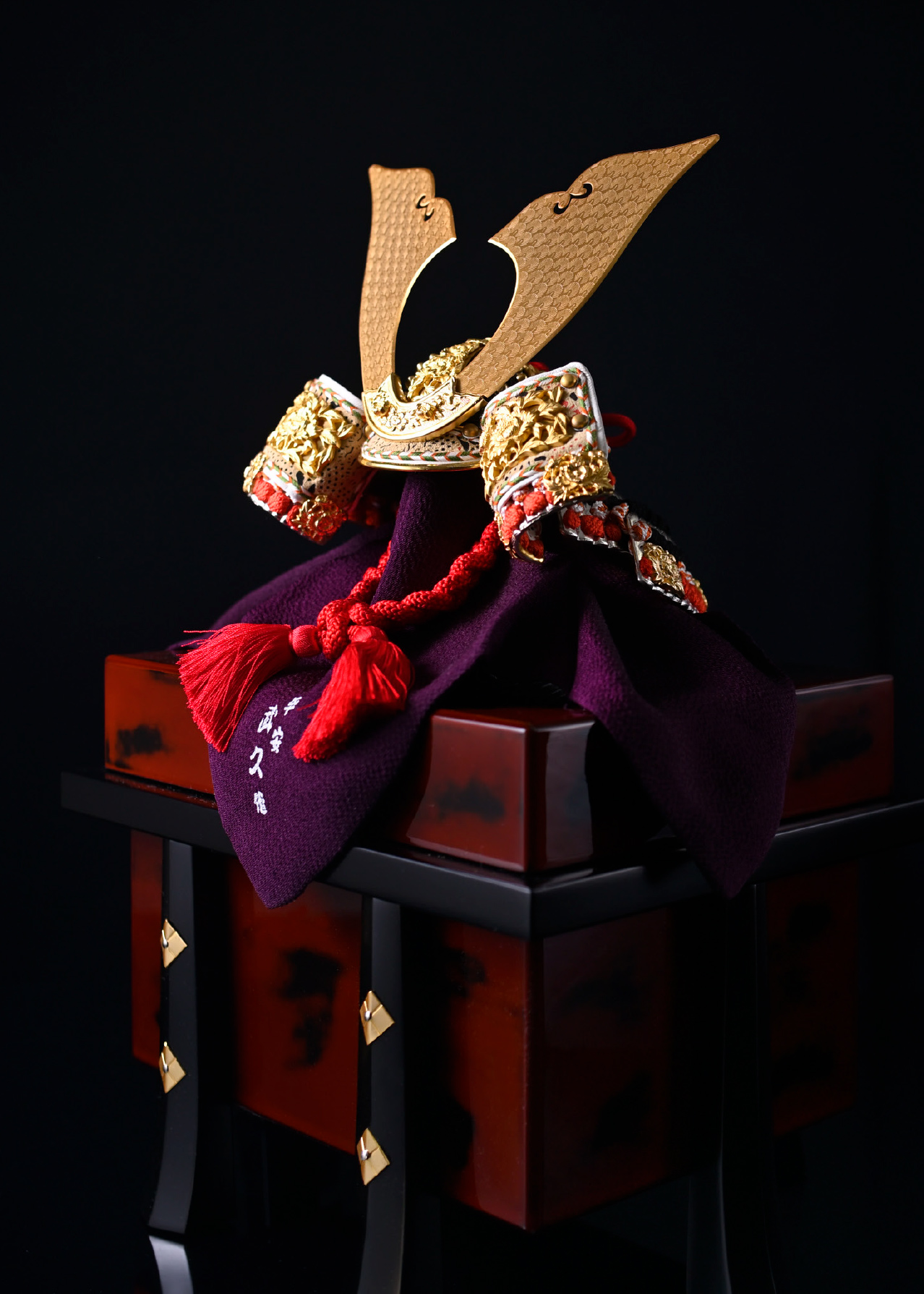 7
7
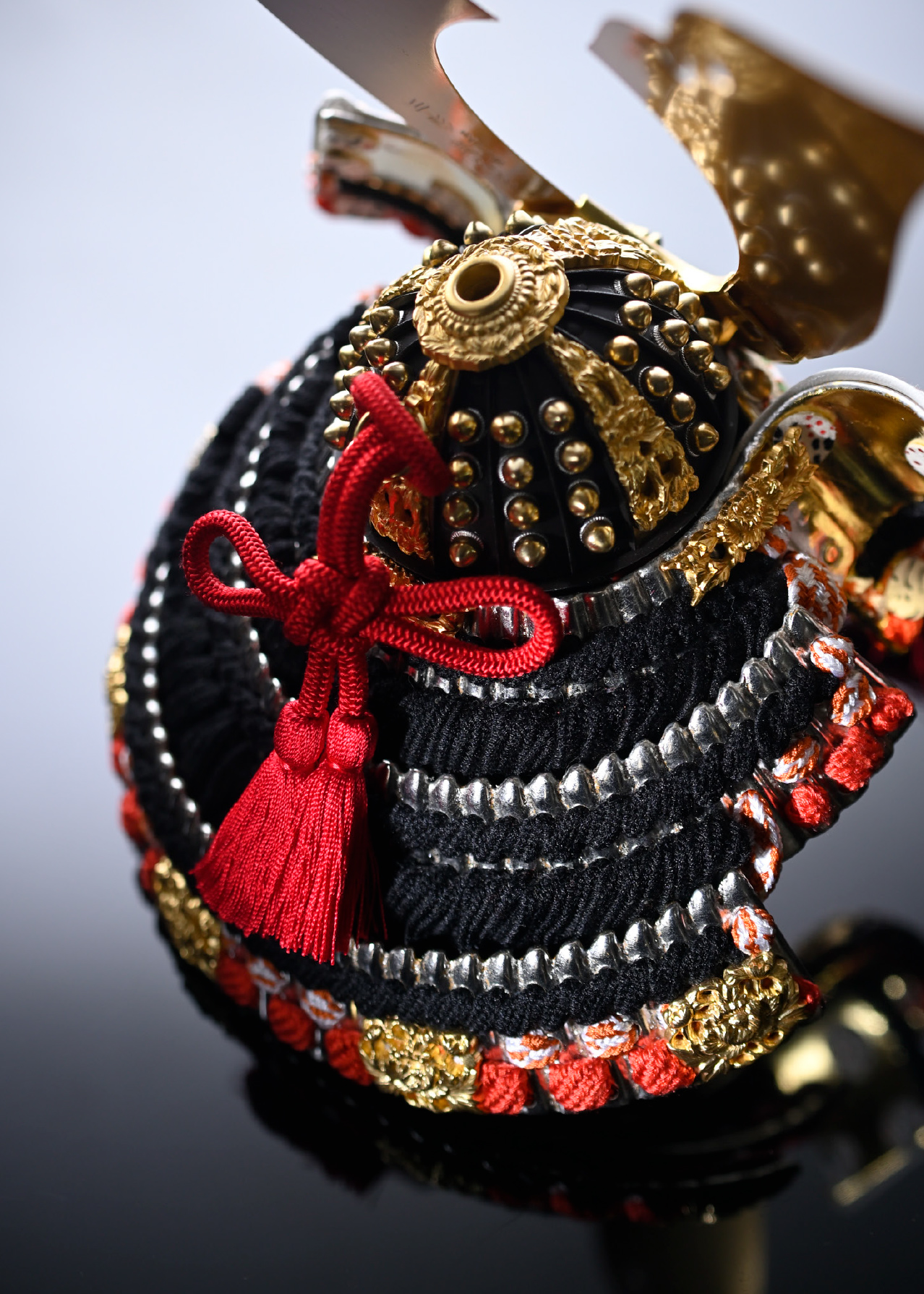 8
8
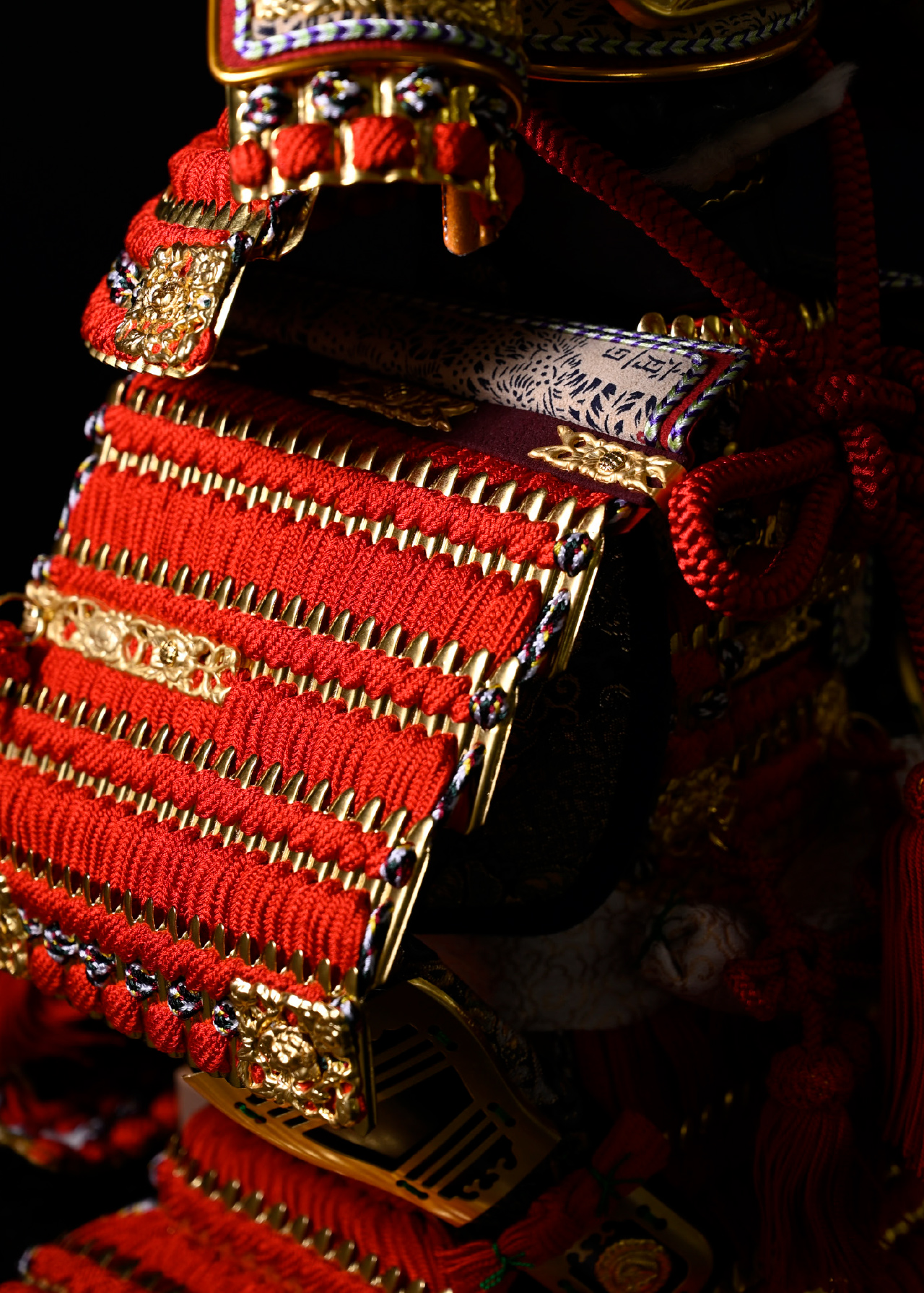 9
9
兜から伸びる金色の角状の飾りは「鍬形」と呼ばれ、武将によってさまざまなデザインがある。
(5,6,7,8,9 すべて京甲冑工房武久)
The golden horn-shaped ornament that extends from the forehead is called hoe. The designs depend on the military commander. (5,6,7,8,9 Kyo Kacchū Kōbō Bukyū)

